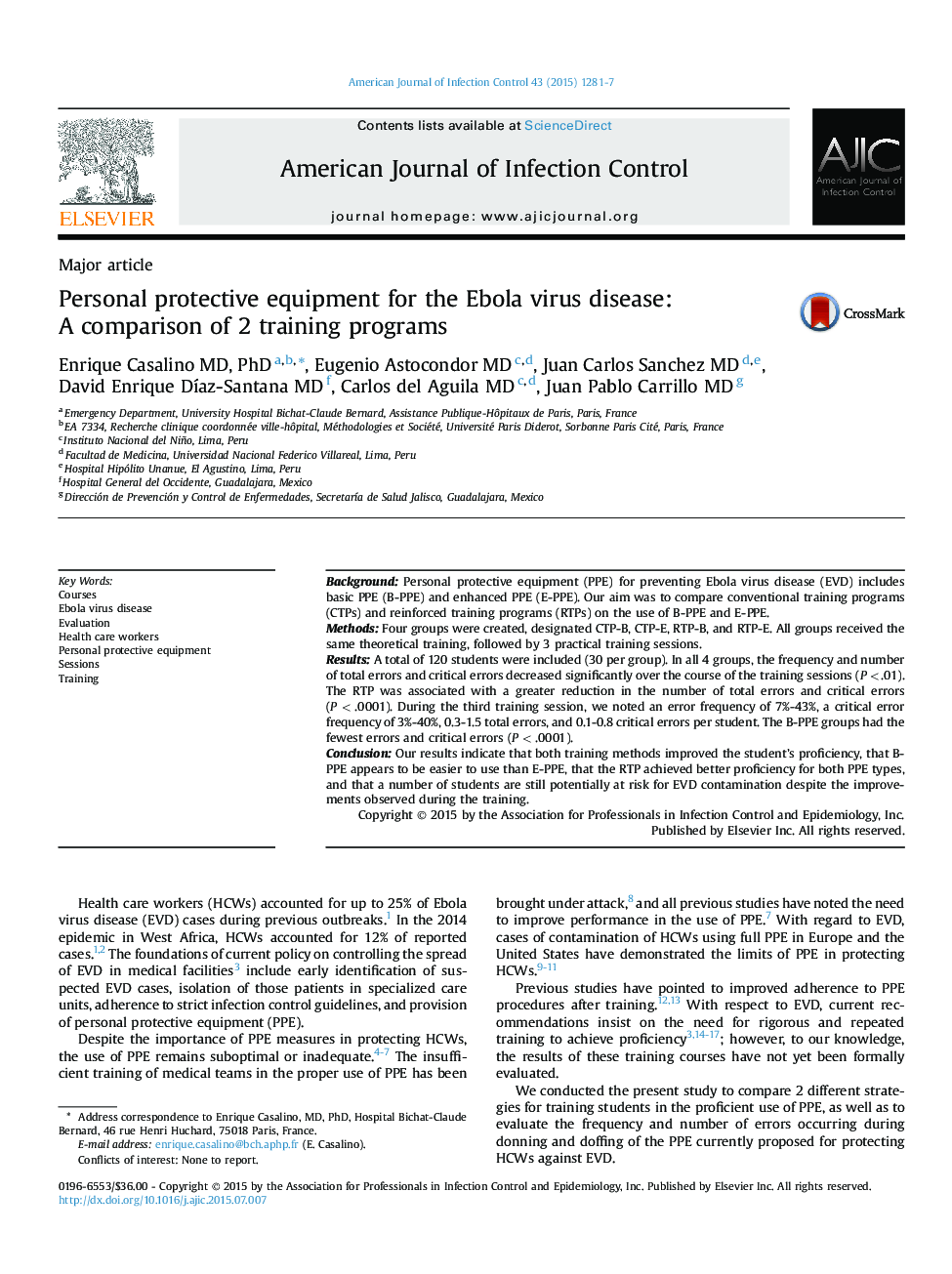| Article ID | Journal | Published Year | Pages | File Type |
|---|---|---|---|---|
| 5866325 | American Journal of Infection Control | 2015 | 7 Pages |
â¢Despite current recommendations, training courses for Ebola virus disease personal protective equipment (PPE) have not been evaluated to date.â¢We evaluated basic and enhanced PPE with conventional and reinforced training programs.â¢Critical error frequency was between 3% and 40% at the third training session.â¢Basic PPE appears to be easier to use than enhanced PPE.â¢The reinforced training program achieved better proficiency for both PPE types.
BackgroundPersonal protective equipment (PPE) for preventing Ebola virus disease (EVD) includes basic PPE (B-PPE) and enhanced PPE (E-PPE). Our aim was to compare conventional training programs (CTPs) and reinforced training programs (RTPs) on the use of B-PPE and E-PPE.MethodsFour groups were created, designated CTP-B, CTP-E, RTP-B, and RTP-E. All groups received the same theoretical training, followed by 3 practical training sessions.ResultsA total of 120 students were included (30 per group). In all 4 groups, the frequency and number of total errors and critical errors decreased significantly over the course of the training sessions (PÂ <Â .01). The RTP was associated with a greater reduction in the number of total errors and critical errors (PÂ <Â .0001). During the third training session, we noted an error frequency of 7%-43%, a critical error frequency of 3%-40%, 0.3-1.5 total errors, and 0.1-0.8 critical errors per student. The B-PPE groups had the fewest errors and critical errors (PÂ <Â .0001).ConclusionOur results indicate that both training methods improved the student's proficiency, that B-PPE appears to be easier to use than E-PPE, that the RTP achieved better proficiency for both PPE types, and that a number of students are still potentially at risk for EVD contamination despite the improvements observed during the training.
